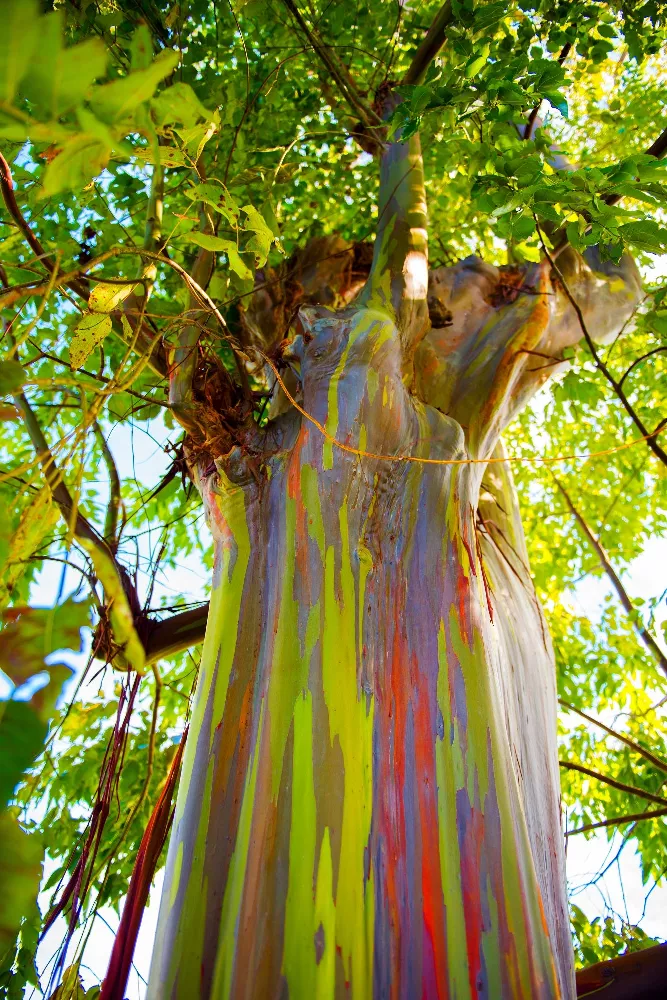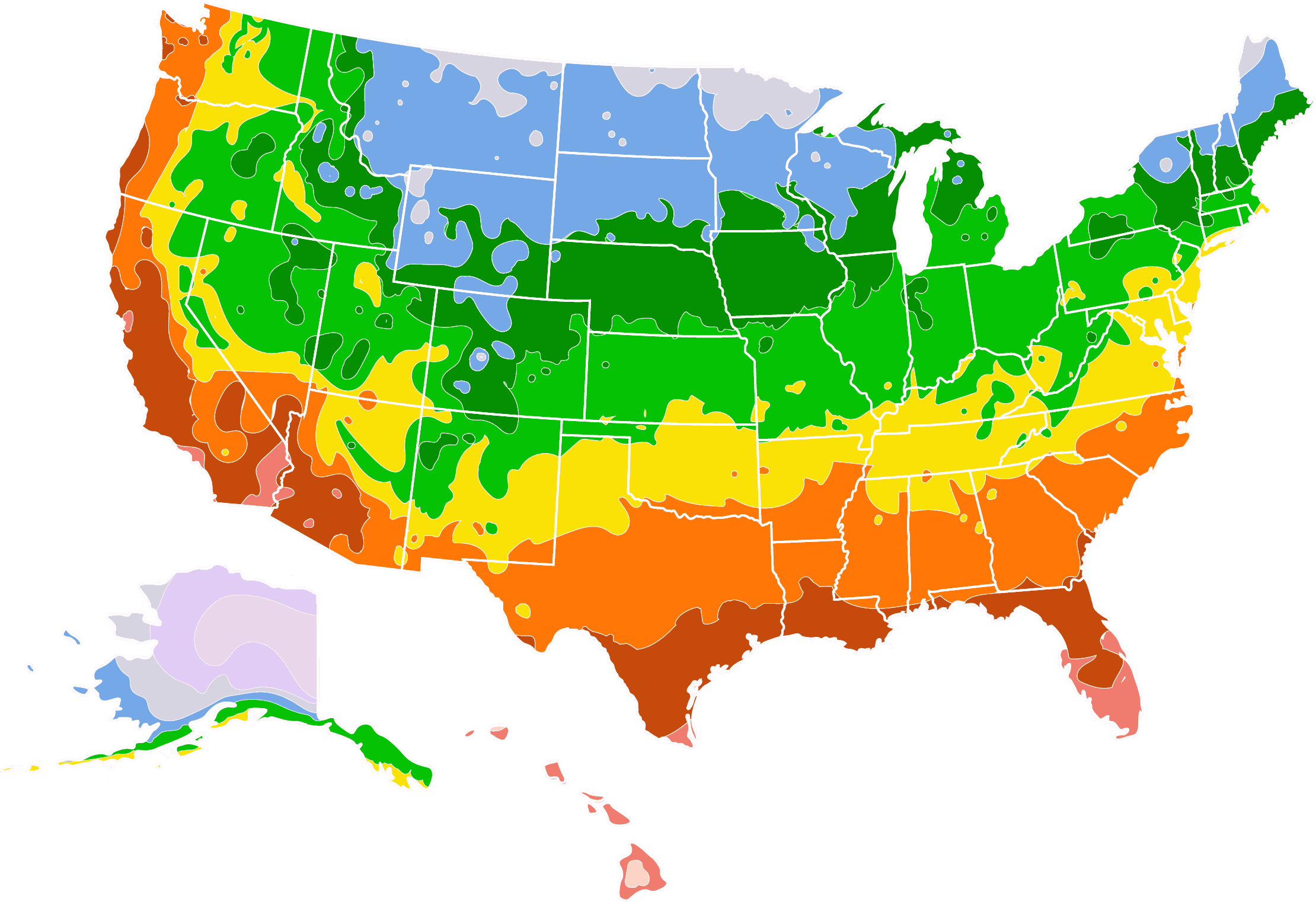- Home >
- Edible Plants >
- Guava Tree ‘Ruby Supreme’
Guava Tree 'Ruby Supreme' for Sale - Buying & Growing Guide
- Ships in 1-2 days
- 1-Year Warranty Eligible
- Pots or accessories are not included unless specified in the product options.
Shipping Details:
Once your order is shipped, you’ll receive an email with a tracking number and estimated delivery date. Most orders ship immediately, but some items are seasonal and may only ship in spring or fall. These products are noted on the website.
Ruby supreme guava trees are an American tropical citrus tree. They produce a delicious fruit that is popular worldwide. The tasty, baseball-size fruit is a favorite for eating fresh and for making into juice or preserves. Here are some other good reasons to plant ruby supreme guava trees:
- Are excellent choices for new fruit gardeners.
- With appropriate care, they can produce fruit at a very early age.
- Thrive in a wide variety of soils and locations.
Plant Care
Sunlight

Prefers full sunlight but tolerates partial shade as well.
Watering
Wait for soil to become dry then water deeply. Avoid standing water.
Fertilizing

Find fertilizer that is balanced and has some magnesium. Begin fertilizing monthly, then do so four times each year once the plant is established.
Planting and Care
Planting instructions
Ruby supreme (Psidium guajava) guava trees do best in USDA zones 8-11. You can also grow guavas in containers in zones 4-11 if you bring your plant indoors during the winter. Established trees can survive short freezing periods and prefer sheltered locations in full sun. Plant your tree at least 10 feet from other trees. Avoid overhead obstructions, nearby buildings, and structures. Along with reaching up to 20 feet tall, the canopy of guava trees can spread 15 to 20 feet in diameter.
Dig a hole in well-draining soil that is twice the size in diameter of the current root ball and the same depth. The guava tree isn’t picky about the soil composition. Perlite, sand, and soil are good additions, especially for potted specimens.
When choosing a container, glazed pots retain moisture better than those left unglazed. Be sure there are adequate drainage holes and a layer of pebbles in the bottom of the pot. Place the tree in the container and fill it with a high-quality potting mix. Keep the container in a sunny area protected from strong winds.
Watering and nutrients
Guava trees require heavy watering when they are young but can’t tolerate wet feet. Root rot will occur if they sit in standing water. Older ruby supreme guava trees are drought-resistant for short periods. During blooming and fruiting, it is essential that the tree not suffer any periods of drought. A two to six-inch layer of mulch placed 10 to 12 inches from the trunk can help retain moisture.
Use a balanced, slow-release fertilizer two to three times a year. Container trees need more regular treatments. It is best to apply the fertilizer during a deep watering session. Trees that don’t receive the extra nutrients grow slower than fertilized trees.
Pollination
Ruby supreme guava trees are self-fertile but do well with companions. Planting a second or third guava tree can aid in cross-pollination. More trees help to increase fruit production for both trees.
Pruning
With their moderate growth, guava trees need regular pruning to keep their shape. It may be wise to keep your ruby supreme guava trees shorter than 10 feet. Doing so will keep them from falling over during high winds. Light pruning can help strengthen the tree’s base to bear the load of heavy fruit production. Guava trees flower and set fruit on new growth, so regular pruning can keep them producing longer.
Pests, diseases, and animals
Guava trees attract many pests, and ruby supreme guava trees are no different. Fruit flies, guava fruit moths and borers, scales, thrips, and whiteflies are common. Covering the ripening fruit with a paper bag can help control the borers, flies, and moths. Scales and thrips eat the fruit, leaves, and stems, but your best line of defense is constant monitoring for these pests. If you find them, spritz the tree with a dilution of homemade white oil and gently wipe the surface of the plant with a cloth or rag. You may need to employ more drastic measures to eradicate heavy infestations.
Guava trees are susceptible to various types of leaf spot and anthracnose attacks. Both diseases may cause leaf drop and other damage. Creating increased airflow among the branches can help reduce these diseases. You can also use a copper foliar spray to help with both problems.
Nematodes are an invasive, microscopic roundworm that attacks the guava tree’s roots. If left unchecked, the nematodes can cause the tree to become unthrifty and eventually die. Fertilizer and mulch can both help lessen the effects of a nematode infestation.
Harvesting
Once the trees have flowered, it is 60 to 90 days before the fruit is ready to harvest. Depending on where you live, the harvest season ranges from April to November. Some tropical locales may even get a second harvest. A happy, healthy ruby supreme guava tree can produce 40 to 80 pounds of fruit each year. It isn’t hard to harvest the aromatic fruit. You can pluck it from the branch with a twist or snip it off with shears. Fruit will survive in the refrigerator for up to a week after harvest.
FAQs
Is the ruby supreme guava tree appropriate for a novice gardener?
Guava trees are an excellent choice for those new to growing citrus fruit or any other produce. They are a favorite of veteran gardeners as well. With minimum care, these trees can grow and thrive in a wide variety of climates, soils, and locations. Guava trees are forgiving of beginner mistakes and will overcome many of them.
How soon can I expect my guava tree to produce fruit?
Some ruby supreme guava trees have produced fruit as early as the first year of planting. It is more common for them to yield heavy crops within two to three years of being planted. Meet your tree’s light, water, and nutrient requirements for a quicker first harvest. Trees set in-ground will usually produce sooner than container-grown ones.
Will my guava still produce fruit in a container?
Even a smaller ruby supreme guava tree will produce a large amount of fruit when grown in a pot or container. As long as the tree has plenty of room for its roots and doesn’t become crowded, it will continue to grow. Regular and constant watering is crucial as too much drought can slow or stunt the tree’s growth. Full sun and proper nutrients will also ensure optimal health for your potted guava. Bring potted guava trees indoors when the temperatures drop to 40 degrees Fahrenheit and below.
Do ruby supreme guava trees go dormant in the winter?
Guava trees are a perennial, semi-evergreen that are native to the tropics. They are at their best when temperatures range from mid-70 to upper 80 degrees Fahrenheit. While they won’t lose all their leaves when the temperature drops, they will slow their growth. The fruit production will stop until warm weather returns. Keep watering your tree, but don’t apply fertilizer until the temperature rises above 60 degrees Fahrenheit.
Compare Similar Products
Customer Reviews
 Guava
GuavaIt's ok no fruit yet










